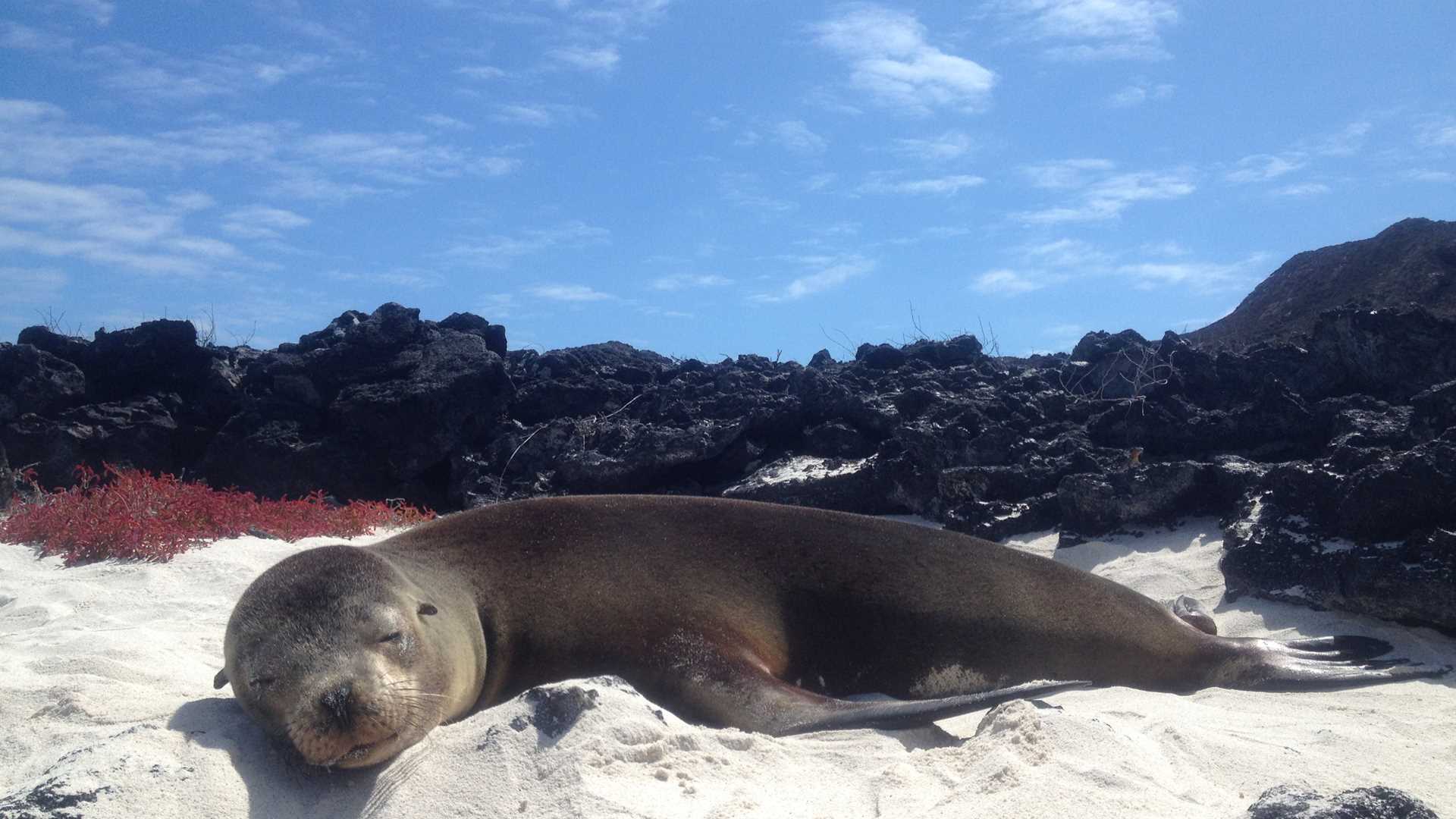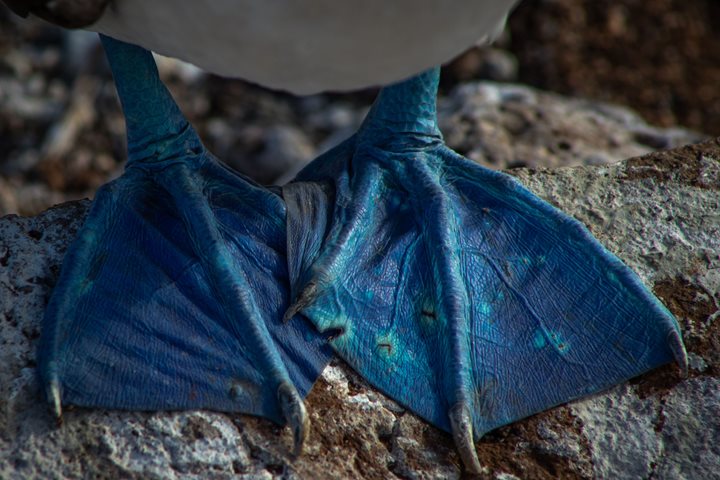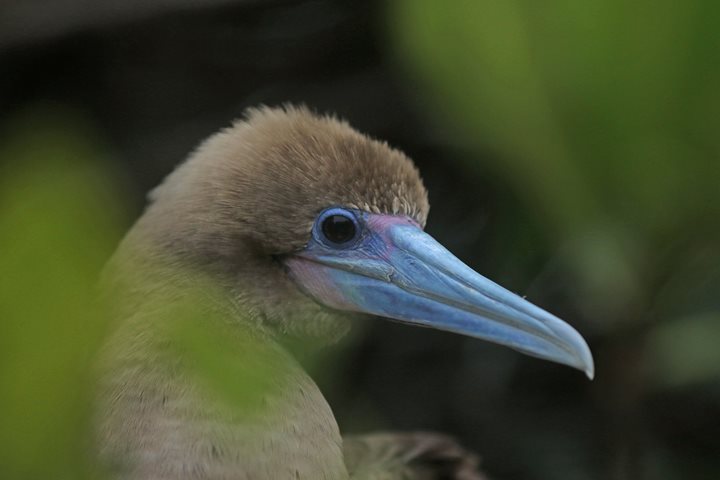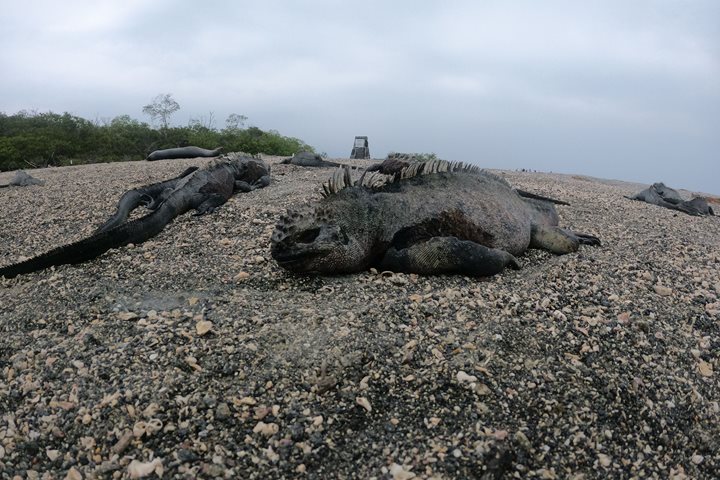Today after sunrise we found ourselves anchored next to Sombrero Chino Islet on the southern coast of Santiago Island. The landscape that we were able to observe from the ship was dramatic as most of it was made of a big, barren pahoehoe lava flow that happened in 1897. This part of our journey we explored the geological younger side of Galapagos and we were able to view some interesting volcanic features.
Our morning adventure started at 06:30 am with a kayak expedition where we encountered numerous sea lions, some that were playing in the water near the kayaks and others that were on the rocks. By 07:00 am other guests went on panga (Zodiac) rides to check out the geology and wildlife of this area. Our guests were impressed by the interesting small volcanic cones that covered the landscape. At this point our guests had the chance to learn about the interesting geological formations of the Galapagos Islands. The highlight of this outing was a Galapagos penguin that was standing on a rock and allowed everybody to take pictures. As well, the panga rides encountered a few Galapagos sea lion pups that were playing next to the shore and Lava herons that were fishing next to the coast. After our early morning costal exploration everybody returned to the National Geographic Islander for a delicious breakfast. By 10:00 am our guests were ready for the water activities. The snorkeling adventure was very successful since our guests encountered a great diversity of fish, including Blue chin parrotfish, Pacific creole fish, Scissor tailed damselfish, Black striped salemas and a number of White tip reef sharks. It was time for lunch so we headed back onboard.
Right after lunch the guests of the National Geographic Islander had the chance to ask questions about photography as they had a session with one of our photo instructors and also had the opportunity to attend a talk given by one of the members of the exploration team on the human history of the Galapagos Islands.
The action began again at 16:00 with tree groups of nature hikers that went ashore on Sullivan Bay, Santiago Island to explore the remarkable lava flow which was little more than a hundred years old. At this site everybody had the chance to hike over patches of smooth “pahoehoe” or ropy lava and we avoided the sharp and cracked patches of “aa” lava. At the end of the hike our guests got really close to cinder and spatter cones and of course learned about their interesting formation process. It was already 6:00 pm and we returned to the National Geographic Islander for the evening.







